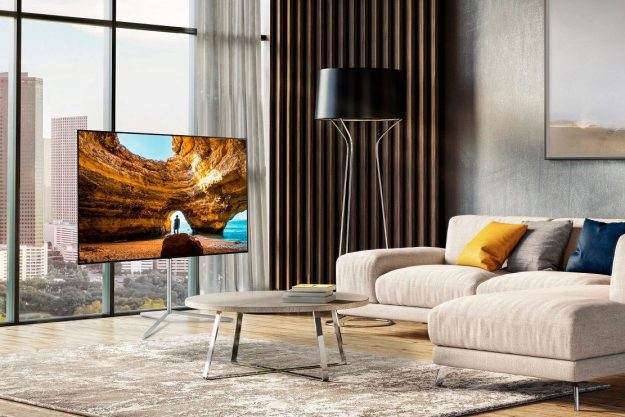In a perfect world, every speaker system would come with a personal “audio chauffer” to make it play what you want, when you want. So when you and your significant other are having a romantic lobster dinner and you both want to hear that song — the one that played at your wedding — you just ask Chauncey to throw it on, and he makes sure it plays right then.
Alas, between food, boarding and dry cleaning his tuxes, it’s just not very practical. But it would accomplish what everyone’s trying to get to: detecting musical preferences fast and with pinpoint accuracy. Consumers want to hear what they want to hear — now, not after the 30 seconds it takes to scroll through a library. This is where the San Francisco-based Aether, maker of “products that learn,” and its Cone speaker come in.
The Cone starts playing a song the moment you turn it on — and according to Aether, it’s probably exactly, or close to, what you want to hear. If not, Cone likely hasn’t gotten to know you well enough; the smart speaker might find over time that you enjoy Lou Reed when you’re getting ready in the morning, but prefer Mozart when you kick off your shoes after work. It’s an incredibly ambitious concept, with an ambitious price tag to go with it: You’ll have to drop a hefty $400 for this supreme musical assistant — and, at a price like that, we can only hope that Cone does everything Aether says it can.
It pulls audio from streaming music services, Internet radio stations, podcasts, and your own stuff via AirPlay.
The little dunce cap-shaped speaker has a dial that runs along the circumference of the speaker’s edge that you turn in varying degrees depending on what you want. A little spin will change to a new song, podcast, and so on; a big spin will throw something wildly different at you. You can also just tell Cone what you want to hear, among other interactive controls.
It’s pretty small at just 6 inches long and 6 inches wide, weighing roughly 3 pounds. It contains a built-in rechargeable lithium ion battery — offering eight hours of playback — and a 3-inch woofer/dual tweeter design for “natural stereo envelopment.” You’ll need a device running iOS 7 or Mavericks (and up) for setup, but we guess Aether might expand Cone’s compatibility as it gets closer to the projected release date early this summer.
Stoked? You can reserve one now or see it in action in the video below.
Editors' Recommendations
- The best smart speakers for 2024
- Sony wants you to play your summer soundtrack on its new wireless speakers
- Freaked out by the FBI’s smart TV warning? Here’s what you should do
- Bose’s $349 portable smart speaker with Bluetooth aims to steal Sonos’ thunder
- Dell slashes price on this JBL Harman Kardon Allure smart speaker


